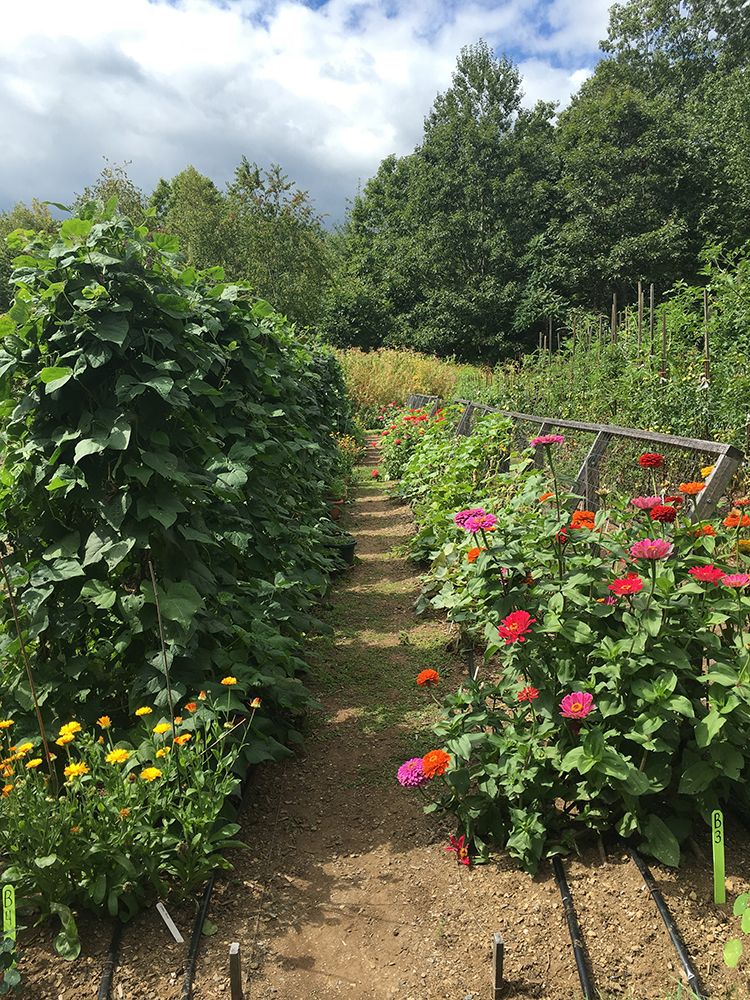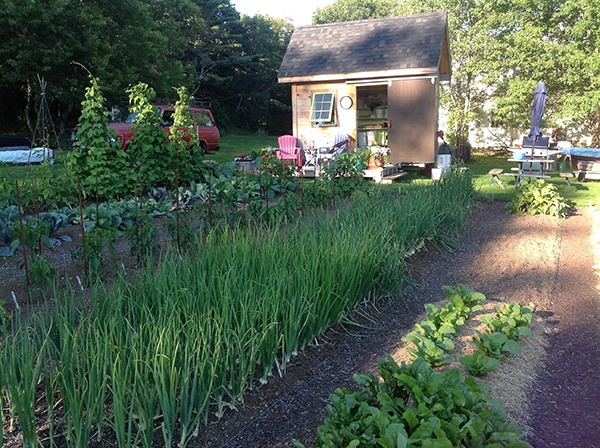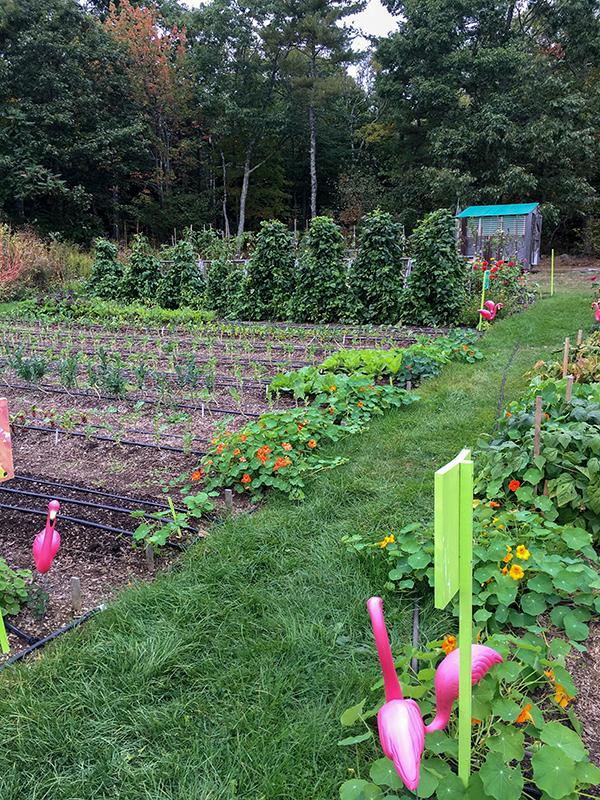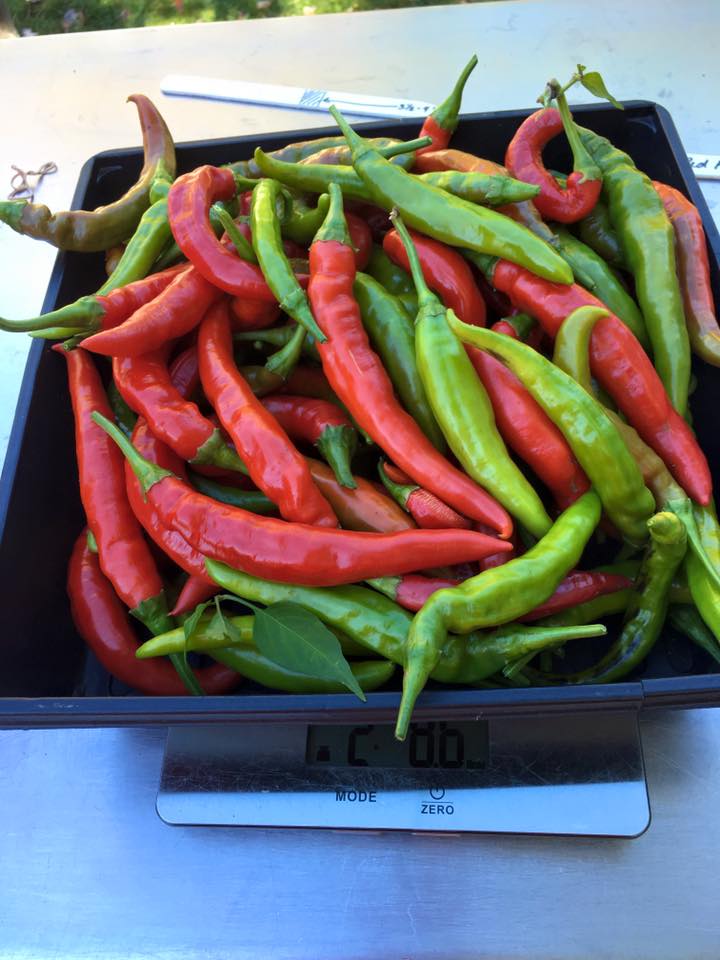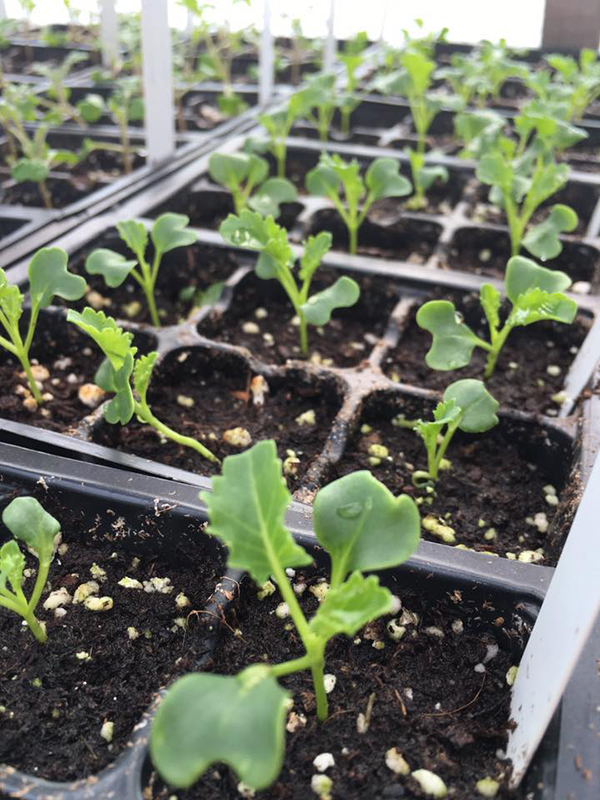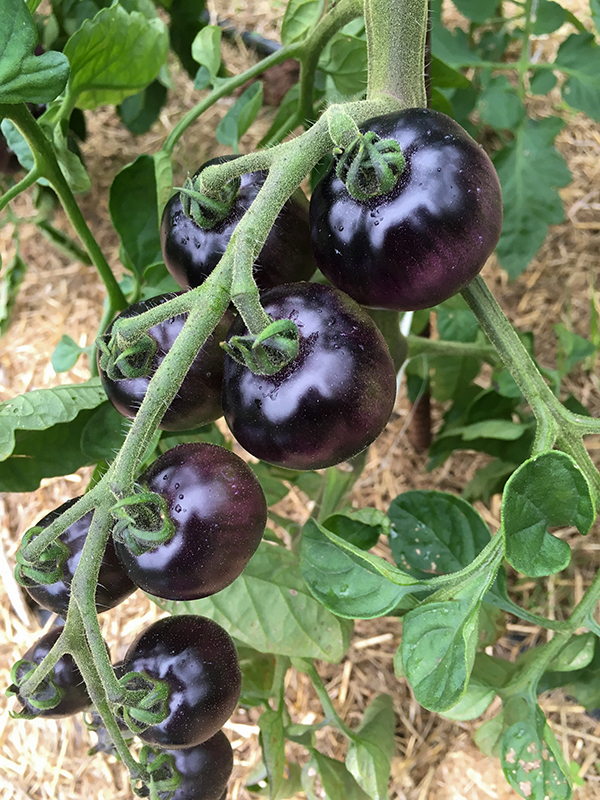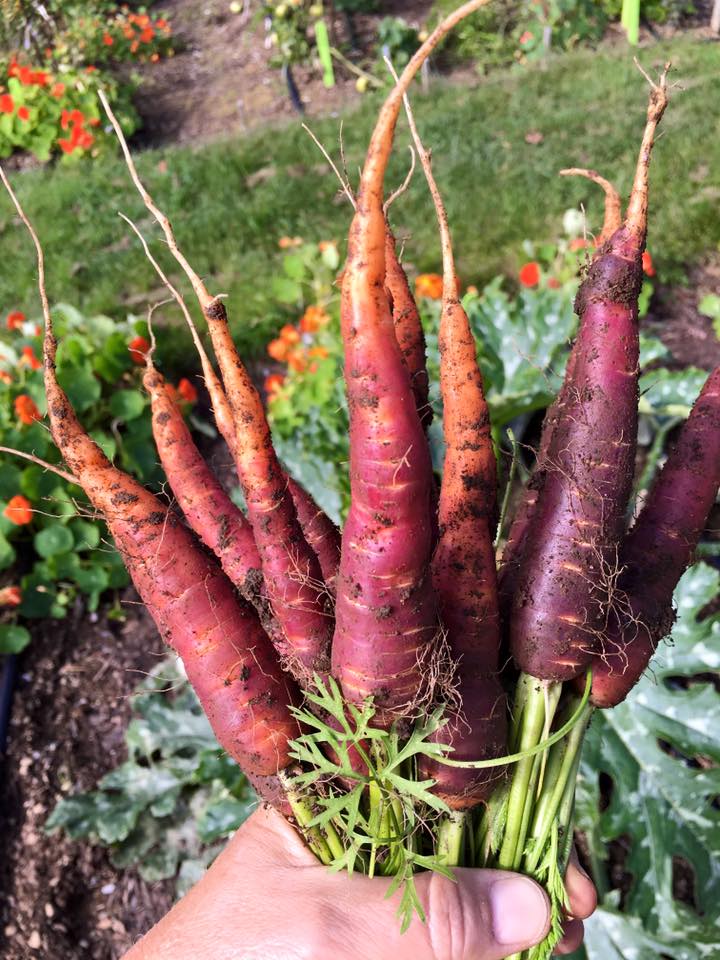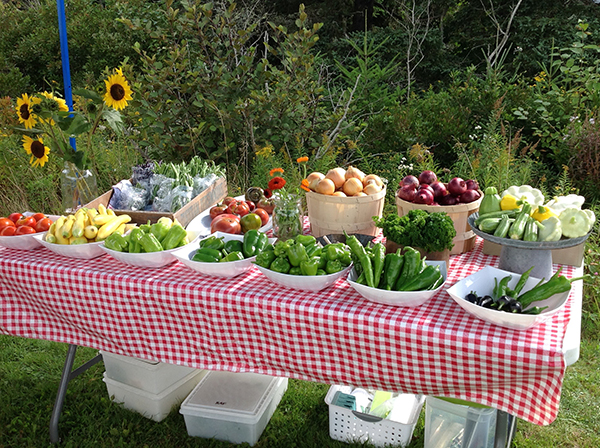At the end of a little dirt road in Owls Head, Maine, lies Headacre Farm, where I grow herbs, vegetables, flowers, and fruit, much of which goes to Café Miranda, the award-winning restaurant in nearby Rockland. Chef Kerry Altiero, the owner and driving force behind Café Miranda, owns the farm property. I lease the land from him for my business, which allows me to sell not only to the restaurant and its growing catering operation, but also to my own customers.
Kerry bought the property years ago intending to use it to grow produce for the restaurant. Seven years ago, over a couple of beers, I offered to help make that happen, and the rest is history, as they say. Chef Kerry and I have a great working relationship, bolstered by our long-standing friendship. We meet weekly to discuss farm operations, and, since the farm is also his home, we often meet right in the growing beds. I’ve been a big fan of his for years, and we share the same sense of excitement about great food.
Headacre Farm is perfectly sited on the south side of Ingraham Hill, a couple of miles from the restaurant and a little more than a stone’s throw from the head of Rockland Bay, hence its name. It was once a working salt-water farm. Over the years the woods have grown up, but I still have 4 or 5 acres of cleared land to play with. There are two large open areas, one close to the farmhouse and other farm buildings, and the other down our little farm lane through the woods. Right now, I have about an acre and a half under intensive cultivation, divided between the two areas.
The main garden is in the first field. It has two large sections, each of which is further divided. Within these, I created permanent raised beds of various widths and lengths, separated by paths. When I designed this area, my intention was to make it not only extremely productive but also beautiful. I grow companion and edible flowers at the ends of each growing bed, and also use them to separate different crops or varieties within the beds. I have devoted one large sub-section to a rotation of cutting flowers, including dahlias and sunflowers, and another to growing annual herbs like parsley, cilantro, fennel, dill, and some of the more exotic herbs like shiso. This year, I added a bed for perennial herbs such as oregano, tarragon, thyme, and lavender.
I expanded into the second field this summer. I plan to use these beds for those crops that either take up a lot of room, like winter squash and melons, or that Café Miranda needs great quantities of, such as kale, chard, parsley, spinach, Brussels sprouts, and broccoli.
I choose all of the vegetable varieties I grow at the farm, although I run the list by Chef Kerry early in the year. Kerry has been working with farmers and foragers since he was a young punk chef in the 1980s, so he knows his veggies. As a loyal Café Miranda customer, I know the menu intimately! When choosing what to grow, I have to keep in mind what the restaurant will use and how it will stand up in the wood-fired oven. Over the years, we’ve refined our selection of kale varieties, for example, to suit the needs of the restaurant. For the catering division of Café Miranda, I can grow more unusual varieties and types of vegetables, like semi-sweet frying peppers, frisée endive, and unusual radicchios.
I order seeds from Fedco, Johnny’s Selected Seeds, and Pinetree Seeds, all located in Maine; High Mowing Seeds in Vermont; and Territorial Seeds in Oregon. When choosing seeds, I try to find those that are grown organically, suit our northern climate, and are attractive and tasty while also having good disease resistance. I grow a number of heirloom varieties, such as the tomatoes ‘Cherokee Purple’ and ‘Green Zebra’ and flat-podded beans like ‘Northeaster’ and ‘Dragons Tongue.’ It doesn’t matter as much to me if a seed is an open-pollinated or hybrid variety as much as if it will meet our high standards of taste and quality. Over the years, I have experimented with different varieties to see what has worked well for both the farm and the restaurant, and now I have a great list of “tried and true” crops.
Just about everything I grow at the farm is started by me, with the exception of rhubarb and some herb plants. The season begins in March in my two seed houses, where I start the seeds we’ll transplant into the beds, like tomatoes, peppers, eggplant, lettuce, etc. I start seeds all season long, as it allows me to create a continuous plant yield. Other seeds for crops like greens mixes, cilantro, radishes, carrots, and beets, for example, are directly sown into the planting beds at the right time and are also planted in succession, if appropriate.
By the beginning of April we are working in the beds, and this continues into October, when we sow cover crops to protect and enrich the soil over the winter, plant next year’s garlic crop, and harvest the cold-hardy plants as long as we can into late fall. During the winter months, I wrap up the record keeping for the past season, order seeds, and plan for the upcoming season. And then in late February/early March, it starts all over again.
Unlike many other farmers, I don’t use plastic mulches. Instead, I like to under-plant or use organic mulches and composts to top the beds. For example, I plant nasturtium under all of the tomatoes. These not only make those beds stunningly beautiful, but we harvest nasturtium flowers and leaves for sale, and the spreading plants cover the soil, conserving moisture and reducing weeds. Because I also keep bees at the farm for pollination and honey, I try to spray for pests as little as possible. I use only organically certified pesticides and only when absolutely necessary. We handpick pests like tomato hornworms and Colorado potato beetles and ignore Japanese beetles.
The big challenge I face is producing enough to meet the needs of a busy restaurant while balancing my desire to grow specialty crops of very high quality. Here in Maine we also have to balance the growing season with the tourist season, when the restaurant is the busiest. To continue to address these issues, our plan for next year is to further expand the second growing area to increase production for the restaurant and add high tunnels to allow me to get the tender crops in earlier in the season so that they will mature at the right time for Café Miranda’s busiest months.
Chef Kerry and I also plan to continue to improve the farm in order to make it more sustainable while increasing its natural beauty. Most excitingly, we have been working over the past couple of years to turn the farm into an attractive venue for festive events catered by Café Miranda, using the main garden area as a backdrop. I will be working on getting the farm organically certified.
- Anne Perkins
The Cook's Cook
05-2018
